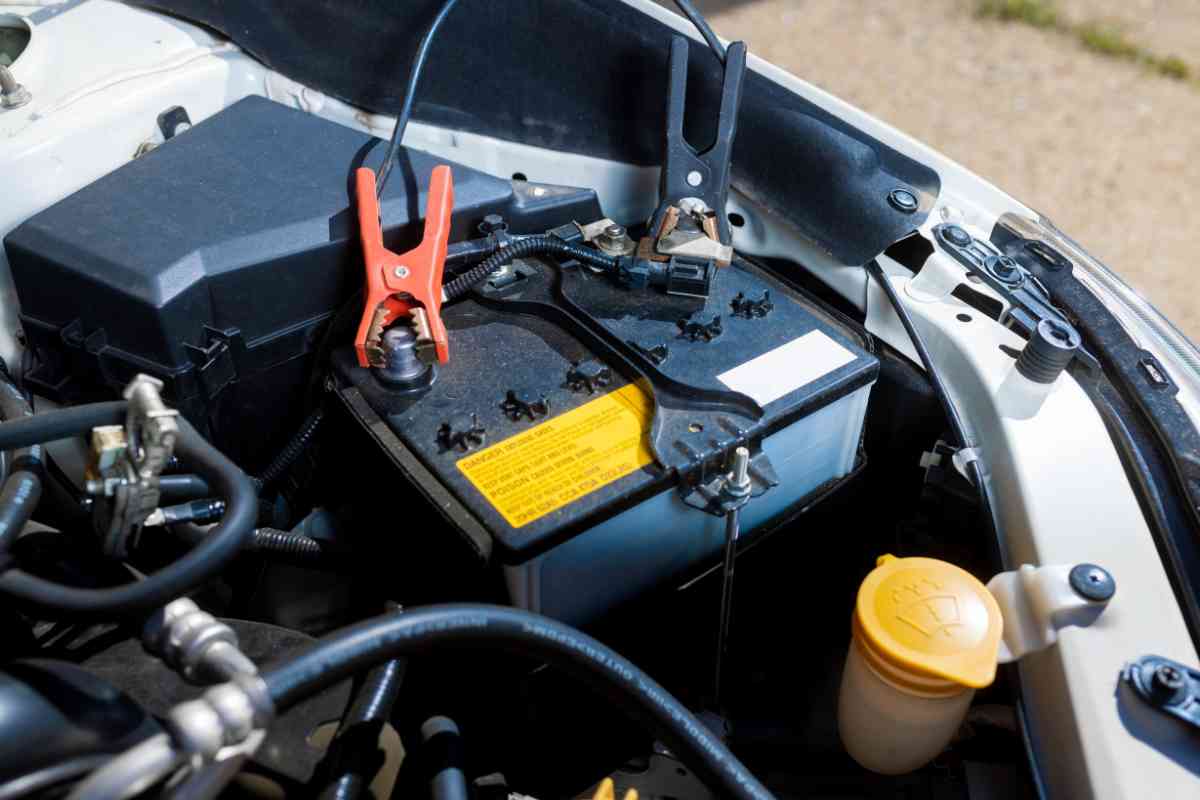Troubleshooting Common Electrical Issues in Cars: A Friendly Guide to Quick Fixes
Have you ever climbed into your car, turned the key, and been met with nothing but silence? Or maybe the dashboard lights started flickering, leaving you puzzled as if your car was sending you signals in Morse code. If you’ve experienced these issues, you’ve encountered the first signs of electrical problems in your vehicle. As seasoned automotive enthusiasts, we understand that recognizing these early symptoms can save both time and money.

Related Post! Are Car Battery Indicators Reliable?
What Are The Most Common Car Electrical Problems?
The most common car electrical problems include dead batteries, faulty alternators, malfunctioning starters, and blown fuses. Other frequent issues are dimming or flickering lights, parasitic drains that deplete the battery overnight, and corroded or loose wiring connections that disrupt electrical flow and functionality in various vehicle systems.
The electrical system of a vehicle is a complex network of wires, fuses, and sensors. While it may appear daunting to pinpoint the exact problem, many electrical issues exhibit common symptoms that, with some knowledge, are easier to diagnose. From a dead battery that won’t start your engine to more subtle problems like a faulty alternator or worn-out spark plugs, being proactive in addressing these issues can prevent a minor annoyance from escalating into a major headache.
Dive Into the Heart of Your Car: The Automotive Electrical System

The electrical system is the lifeline of every car—it sparks ignition and powers functionality. Familiarizing yourself with this system is crucial for maintaining your vehicle’s smooth operation.
Understanding the Electrical Circuit
Imagine the electrical circuit in your car as the body’s circulatory system. This closed loop allows electricity to flow, powering essential features from headlights to radios. Without this seamless flow, your vehicle’s electrical components would cease to function.
Key Components of the Car Electrical System
- Battery: The powerhouse that stores electrical energy to start the engine.
- Alternator: Not only charges the battery but also powers the electrical system while the engine runs.
- Starter: Uses electrical power from the battery to kickstart the engine.
- Fuses and Relays: Safeguard the electrical system from overloads and channel electricity to specific components.
- Wiring Harness: A bundle of wires that transmits electricity and signals throughout the car.
Understanding these components is the first step in effectively troubleshooting any issues.
Related Post! Does Your Car Battery Affect The Performance of Your AC?
Battery Function and Maintenance Tips

The battery is your car’s backbone, providing the essential spark to start the engine. For optimal maintenance, it’s important to keep the terminals clean and secure and regularly check the battery’s charge level. If your engine cranks slowly—or not at all—a dead battery might be to blame.
The Crucial Role of the Alternator
The alternator acts as a stalwart, recharging the battery and keeping the electrical system powered while driving. Dimming lights or power fluctuations can indicate alternator problems. Regular inspections are crucial for maintaining this component’s health.
Diagnostic Tools and Techniques
Encountering an electrical issue in your vehicle can be perplexing, but with the right tools and strategies, diagnosing the problem becomes more manageable. Let’s explore some of the key methods we use to troubleshoot these tricky situations.
Mastering the Use of a Multimeter
A multimeter is indispensable when it comes to diagnosing electrical faults. It measures voltage, current, and resistance, providing crucial data on your car’s battery—often the primary suspect in electrical issues. For example, a fully charged battery should read around 12.6 volts. Readings significantly lower than this generally indicate a battery problem. Remember to set your multimeter correctly and ensure the leads are in the appropriate ports before taking measurements.
Harnessing Diagnostic Trouble Codes
In our computer-driven vehicles, an OBD-II scanner becomes a must-have. This tool pulls diagnostic trouble codes from the car’s onboard computer, pinpointing the exact origin of an issue. This method transforms guessing into precise troubleshooting, streamlining the entire diagnostic process.
The Power of Visual Inspections
Never overlook the effectiveness of a thorough visual inspection. We frequently spot issues such as loose or corroded connections, damaged wiring, or faulty fuses just by a careful examination. Often, the solution to an electrical problem is visible and straightforward—if you know where to look.
Circuit Testing Techniques
Circuit testing is critical for identifying specific faults in the electrical system. Using a circuit tester or a test light can reveal whether electricity is flowing correctly through a component. For example, testing a fuse involves placing a probe on both ends; if the light activates on one side but not the other, the fuse is blown. This method is a quick way to identify and resolve issues.
Related Post! Does Your Car Battery Affect Your Gas Mileage?

Common Electrical Problems and Their Solutions
Understanding and addressing common vehicle electrical issues can save you both time and headaches.
Dead Battery or Charging Issues: A non-starting car is often due to a dead battery. Maintaining clean and tight battery terminals can resolve many charging problems. Performing regular voltage checks can also assess battery health effectively.
Faulty Starter Motor: If turning the key results in a mere click, consider the starter motor. Occasionally, a gentle tap on the starter can temporarily fix it, but a replacement might be necessary if the problem persists.
Alternator Issues: Dimming lights at idle that brighten with acceleration may suggest alternator failure. Early detection of alternator issues can prevent more severe problems.
Flickering Lights: These can result from something as minor as a loose bulb or as major as an overloaded circuit. Start with simple fixes before moving to complex diagnostics.
Blown Fuses: Replace blown fuses with ones of identical amperage. If fuses continue to blow, it indicates a deeper electrical fault requiring further investigation.
Corroded Connectors and Terminals: Corrosion can severely impact electrical reliability. Clean affected areas with a baking soda and water solution and apply a protective spray to prevent future issues.
Poor Ground Connections: Erratic electrical performance often stems from bad ground connections. Inspect for rusted or loose ground wires and remedy them to ensure optimal electrical flow.
Troublesome Relays and Switches: When vehicle functions fail intermittently, checking relays and switches can isolate the problem. Swapping out relays is a simple, effective troubleshooting step.

Advanced Electrical Troubleshooting Tips
When faced with elusive car electrical problems, employing advanced troubleshooting techniques is crucial. These methods can dramatically cut down on time and frustration.
Tackling Intermittent Electrical Issues
Intermittent issues are notoriously tricky, akin to finding a needle in a haystack. The key lies in meticulous observation. Documenting when the issue occurs—including factors like weather, vehicle operation, and time of day—often unveils patterns. Using a multimeter and systematically checking connections can lead us to uncover these elusive problems.
Unraveling Wiring Harness Complications
The wiring harness, the nervous system of your car’s electrical system, can develop issues that range from flickering lights to complete failures. Start by inspecting for visible damage such as frayed wires or corrosion. Armed with a wiring diagram, tracing and testing each circuit is your next step. Remember, this process requires patience as it can be quite time-consuming.
Decoding CAN Bus and Electronic Control Systems
Modern vehicles incorporate Controller Area Network (CAN) bus systems to facilitate electronic communication. Problems within this system can perplex even seasoned technicians. Using a specialized scanner to retrieve fault codes is typically the initial step. Diagnosing CAN bus issues effectively requires a deep understanding of your vehicle’s electronic layout and protocols.
Diagnosing Parasitic Drain
A mysterious overnight battery drain, or parasitic drain, is another common challenge. With the vehicle off, use a multimeter to measure the current draw at the battery terminals. A reading over 50 milliamps suggests an abnormal drain. Systematically removing fuses to isolate the problematic circuit can pinpoint the source of the issue.
Preventive Measures and Maintenance
Regular maintenance and preventive measures are vital to ensure the reliability and longevity of your vehicle’s electrical system. Here’s how you can keep electrical troubles at bay:
Regular Electrical System Checkups
Regular inspections can prevent minor issues from becoming major problems. Annually check your vehicle’s electrical system, focusing on:
- Worn Wires: Inspect for any signs of wear, such as exposure or fraying.
- Corroded Terminals: Clean any corrosion on battery terminals or connectors.
Proper Battery Care
Maintaining your car’s battery is essential for avoiding unexpected problems:
- Cleanliness: Keep the battery clean from grease and dirt to prevent power leakage.
- Charge Level: Regularly check that the battery is fully charged, especially if the car is used infrequently.
Upgrading Electrical Components
Enhancing certain components can improve performance and reduce future issues:
- Headlights: Upgrading to LED or HID bulbs can offer better visibility and efficiency.
- Fuses: Using high-quality fuses that meet your vehicle’s specifications helps prevent electrical failures.
Weatherproofing Connections
Protecting electrical connections from the elements is crucial, especially in adverse conditions:
- Sealant: Apply dielectric grease to connectors to block moisture.
- Inspections: After exposure to harsh weather, check electrical connections for moisture or dirt.
Incorporating these strategies into your regular maintenance routine can significantly extend the life of your vehicle’s electrical system, ensuring it remains robust and reliable. What steps will you take today to enhance your vehicle’s electrical health?
